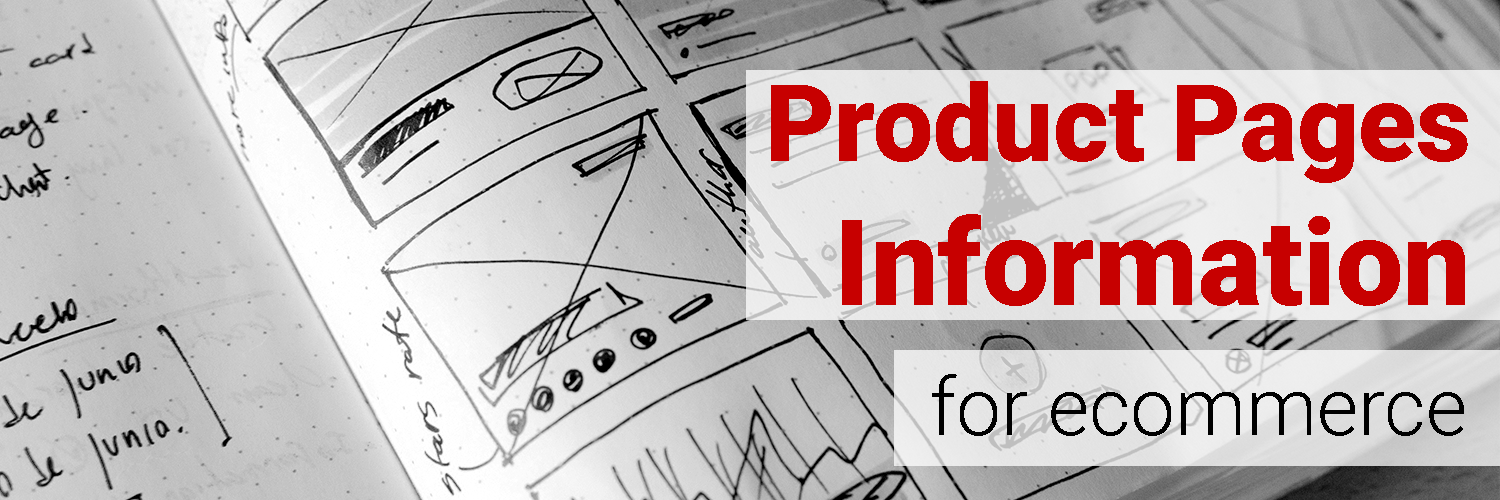Guidelines 176-183

Do people really read product page copy? Maybe. While there’s evidence that most people skim, instead of read, online, there’s also good evidence that product descriptions matter. Substantially.
Although it’s not as blatant as a hero image or a value proposition, product page copy is an important component of a successful eCommerce site. Especially if you’ve got a large amount of traffic, beefing up your product page copy could produce noticeable lifts.
Empirical support from an ecommerce study conducted by NN group found that 20% of overall task failures – when the user failed to successfully complete a purchase when asked to do so – could be attributed to incomplete or unclear product information.
These guidelines aim to help you avoid that 20% of failures.
8 guidelines for ecommerce product description:
- Create unique product descriptions (don’t use the manufacturer’s).
- Every sentence in the product description should tell buyers. something they didn’t know before (don’t tell them it’s chocolate if they’re buying a box of chocolates).
- Gather and analyze product reviews to see what people enjoy most. Include it in your product description.
- Product description should address fears, uncertainties, and doubts- figure out what these are.
- Write your product descriptions in the style of your target audience.
- Share features AND benefits.
- Use specific language in product description (“best value” vs “won X award 4 years in a row”).
- Be altruistic, sell for a “cause”.
Guideline #176. Create unique product descriptions (don’t use the manufacturer’s).
Product descriptions provide an opportunity to increase sales using various copywriting techniques. Manufacturer’s descriptions don’t focus on sales, so don’t rely on them to deliver a powerful message to site visitors.
REI writes a compelling description, includes a video, and a table of details, specs, etc:

Guideline #177. Every sentence in the product description should tell buyers something they didn’t know before (don’t tell them it’s chocolate if they’re buying a box of chocolates).
This straightforward guideline deals with the power of your product description. Your description should be information-packed, starting with the most important details. Read our blog post on product page copy for more insight.
Guideline #178. Gather and analyze product reviews to see what people enjoy most. Include it in your product description.
Analyze product reviews for recurring features or aspects that customers enjoy. Also, look for phrases that are used repeatedly. For instance, if multiple reviews mention how “soft” your sweater is, be sure to advertise the softness in your description.
Guideline #179. Product description should address fears, uncertainties, and doubts- figure out what these are.
To learn what drives potential customers’ buying decisions, comb through product reviews and send surveys to past customers. Take this information and add it to your product description.
Addressing uncertainties, fears, and doubts removes one more obstacle between turning a site visitor into a customer. Read this article to learn more about addressing FUDs.
Petco does an excellent job acknowledging and addressing FUDs. For a $160 self-scooping litter box, a product that seems precarious by nature, the site advertises a 30-day money back guarantee and shares a variety of information all crafted to inform and reassure potential customers:

The description of each product and ingredients list was there as most sites do not show everything. Also it was helpful in that the products show the allergy in case someone needed to know if it was dairy free or gluten free.
Guideline #180. Write your product descriptions in the style of your target audience.
Use qualitative analysis to develop buyer personas. Craft your product descriptions around these personas.
American Eagle’s product description writing accurately reflects the style of their main customer demographic:

I also love how it’s very geared towards my generation – the “like button” seems very fluid with the “feel” of the site. And as I like photos on Instagram all day, it makes sense that I am able to “like” clothes that I’d like to buy on the website, too.
Some things were abbreviated in ways that I would not understand.
Guideline #181. Share features AND benefits.
This guideline doesn’t require too much background. Explain what your product is and why people will be better with it.
BodyBuilding.com effectively explains what’s in their top-selling protein powder and why it’s worth the purchase:

Guideline #182. Use specific language in product description (“best value” vs “won X award 4 years in a row”).
Back up powerful statements for credibility and validity.
Bodybuilding.com on their whey protein powder product page:

Guideline #183. Be altruistic, sell for a “cause”.
One survey found that 94% of people would switch to a brand that supports a cause, and 20% would pay more if the product supported a caused.
Consumers favor philanthropy. Here’s how West Elm does it on a rug product page:

How to do it RIGHT
Petsmart
Using a site wide banner on the top of every page and in the footer, Petsmart reminds their visitors that they donate to charities across the country and of their mission to save lives and end animal homelessness.

